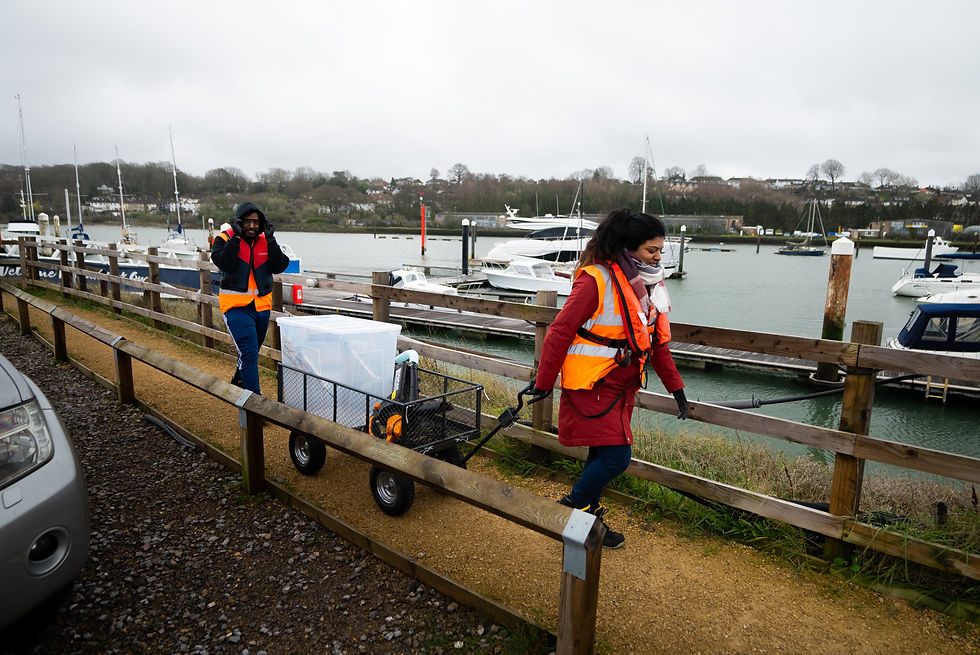The Nurdle Nabber V2
- Nurdle GDP
- Jun 8, 2023
- 2 min read
By Amy Kerrison
After the initial testing of the NNV1 at Shamrock Quay, we noticed some key design issues that we wanted to improve. It was not possible to fix them using the current model, so we decided to start from scratch and manufacture our own separation box, allowing us to dimension it ourselves.
Using readily available materials from B&Q, the separation team got to work building the new unit. The box's length was increased to 1 meter, providing a much larger collection area. The design was also significantly simplified to improve ease of manufacture. Instead of pivoting the mesh, which caused significant issues in the NNV1, we decided to vibrate the whole unit. Sowmi and I manufactured the bulk of the box in 4-5 days using mainly hand tools to ensure the design was accessible. With more people and the instruction manual, the entire system could be rapidly manufactured in 1-2 days.

Improvements were not only made to the separation unit but also to the collection system. Where possible, we changed the tubing to a much more flexible option, improving the range of motion of the nozzle. Additionally, the nozzle was attached to the end of a crutch to enhance ergonomics and control.

After combining the improved systems, we took the NNV2 to Oracle Environmental Experts' facility to test it under the same conditions as the paddock cleaner, enabling us to compare the two designs. Our design outperformed the paddock cleaner in all effectiveness measures. The pick-up speed was 3 times faster, and the energy usage was 6 times more efficient. The purity of the collected matter was 86.8% due to the continuous collection and separation system, minimizing the amount of sand collected.




Comments